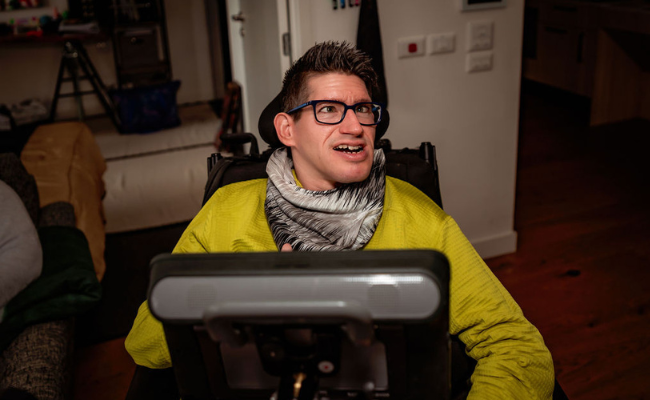Short Term Respite
Short-Term Accommodation (STA) was previously an NDIS-funded support. In October 2025, the NDIS removed STA and now offers Short Term Respite (STR).
STR is often just called 'respite'. STR may be funded in your plan to give you and the people who support you a short break.
It is for NDIS participants who live with or get a lot of assistance from their ‘informal supports’ – meaning family members, friends or other carers who aren’t paid for the support they give you.
Who is STR for?
STR will usually only be funded for NDIS participants who:
- Need more than 6 hours/day of informal support
- Don’t get more than 18 hours/day of formal support
- Don’t live alone
- Are not funded to live in Supported Independent Living (SIL) or Individualised Living Options (ILO) arrangements
What can STR be used for?
With the change from STA to STR in October 2025, the NDIS restricted the ways STR can be used. Since this change, STR can usually only be used for:
- Up to 14 days at a time, and 28 days in a year
- ‘Standard’ accommodation for you – and for an support worker if you need one – in a place like a motel, short stay rental, cabin, cottage, hostel, or respite accommodation that is accessible to you
- Similar support to the support you normally get at home
- Accommodation and support in your home state/territory. An exception to this is border towns, like Albury/Wodonga or Coolangatta/Tweed Heads
STR can be used to pay for reasonable expenses during your time away from home, including the accommodation itself, assistance with self-care and community access. STR may also cover food and certain other expenses in centre-based respite. STR is included in the flexible Core Budget of your NDIS plan.
STR may be used to get paid support workers to support you in your home, while your informal support people have a break.
What can't STR be used for?
STR can’t usually be used to pay for:
- Long-term respite
- Crisis accommodation
- An interstate or overseas holiday, a cruise, or a tour
- Accommodation that includes features that you don’t have at home – for example, therapy pools, entertainment options or luxury features
- Building your independent living skills
- Trialling a new long-term living arrangement
Finding respite accommodation
Click here to view all listings on the Housing Hub that may be suitable for STR. You can also select the 'Map view' option to browse listings in the local area.
Building your independent living skills
In the past, some people with disability have used STR as a way to learn new skills and get experience living away from home. The NDIS won’t let you use STR funding for this anymore.
If you want to build your independent living skills, you can ask the NDIS to fund this in other ways. The first step is to make sure that one of the goals in your NDIS Plan talks about how you want to work towards living more independently.
If you are thinking about what your next home could be like, our ‘Living More Independently’ videos and guidebooks can be really helpful.
The Housing Hub’s Home & Living Specialist Support Coordination Team can work with you to find a home and support outcome that suits your access needs and lifestyle.
Differences between STR and Medium Term Accommodation
Medium Term Accommodation (MTA) is another type of NDIS funding that may be used to pay for a temporary home for you while you can’t live in your usual home. MTA is usually funded for up to 90 days, and is usually only funded if you know where you are going to live long-term.
Unlike STR, MTA only covers the cost of the housing itself – you need to make sure you have funding in your plan for any related support, AT and transport you need. You can learn more about MTA here.
The following table explains when you might use STR or MTA:
| STR | MTA | |
|---|---|---|
| I need a break from my informal supports | ✅ | ❌ |
| My informal supports needs a break from supporting me | ✅ | ❌ |
| My home is being modified to make it more accessible, and I need to move out while the work is done | ❌ | ✅ |
| I am going to be moving into an SDA apartment, but it isn’t finished yet | ❌ | ✅ |
| I am ready to leave hospital, but I need somewhere to live until new AT is installed in my home | ❌ | ✅ |
| I want to learn to live more independently | ❌ | ❌ |
| I want a holiday | ❌ | ❌ |
More info about STR
This page on the NDIS website has info about STR.
You can access the NDIS Guideline about STR here (in Word doc or PDF formats).
The Housing Hub’s Home & Living Specialist Support Coordination Team can support you with your application for STR funding.

Stay up to date
Want to keep up with the latest news on disability housing and how the Housing Hub can help you and the people you support?
Browse Resources

Housing Seeker Profile
Creating a Housing Seeker Profile is a simple process which involves telling us what you are looking for and what is important to you.

Housing Roadmap
The Housing Hub has worked alongside people with disability to map out the stages of a housing journey and the information you need to know about when moving through each step.

Living More Independently
The Housing Hub has teamed up with Mable to create a three-part series about living more independently.

